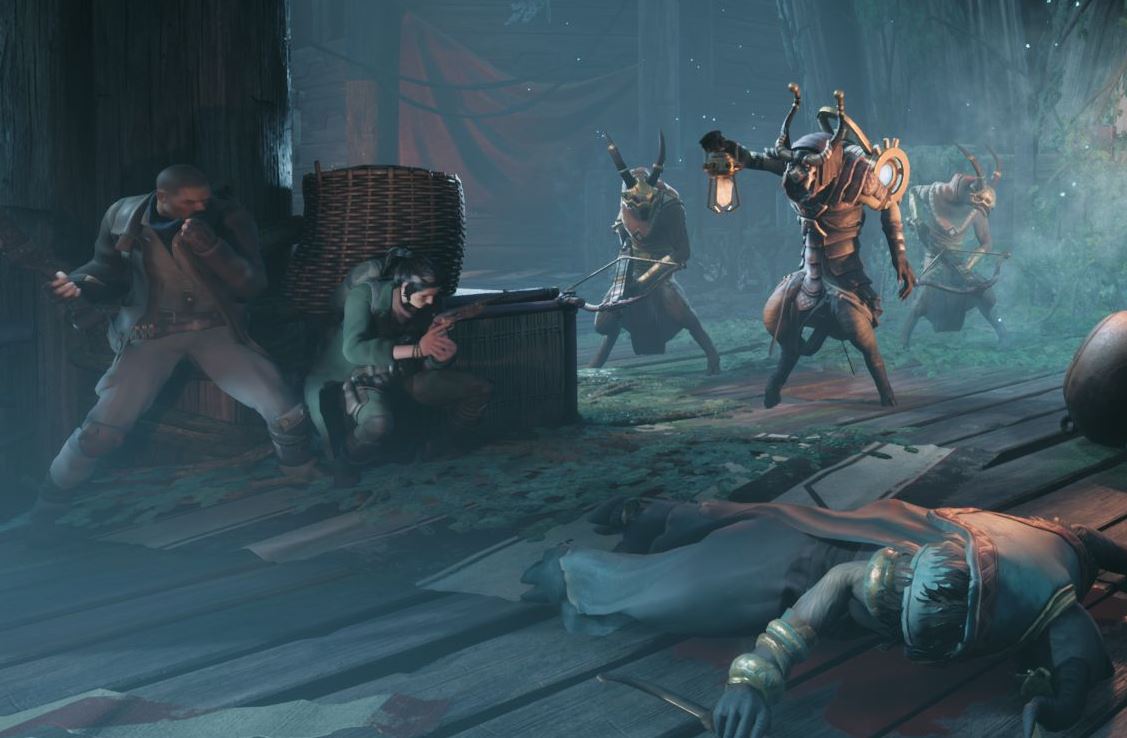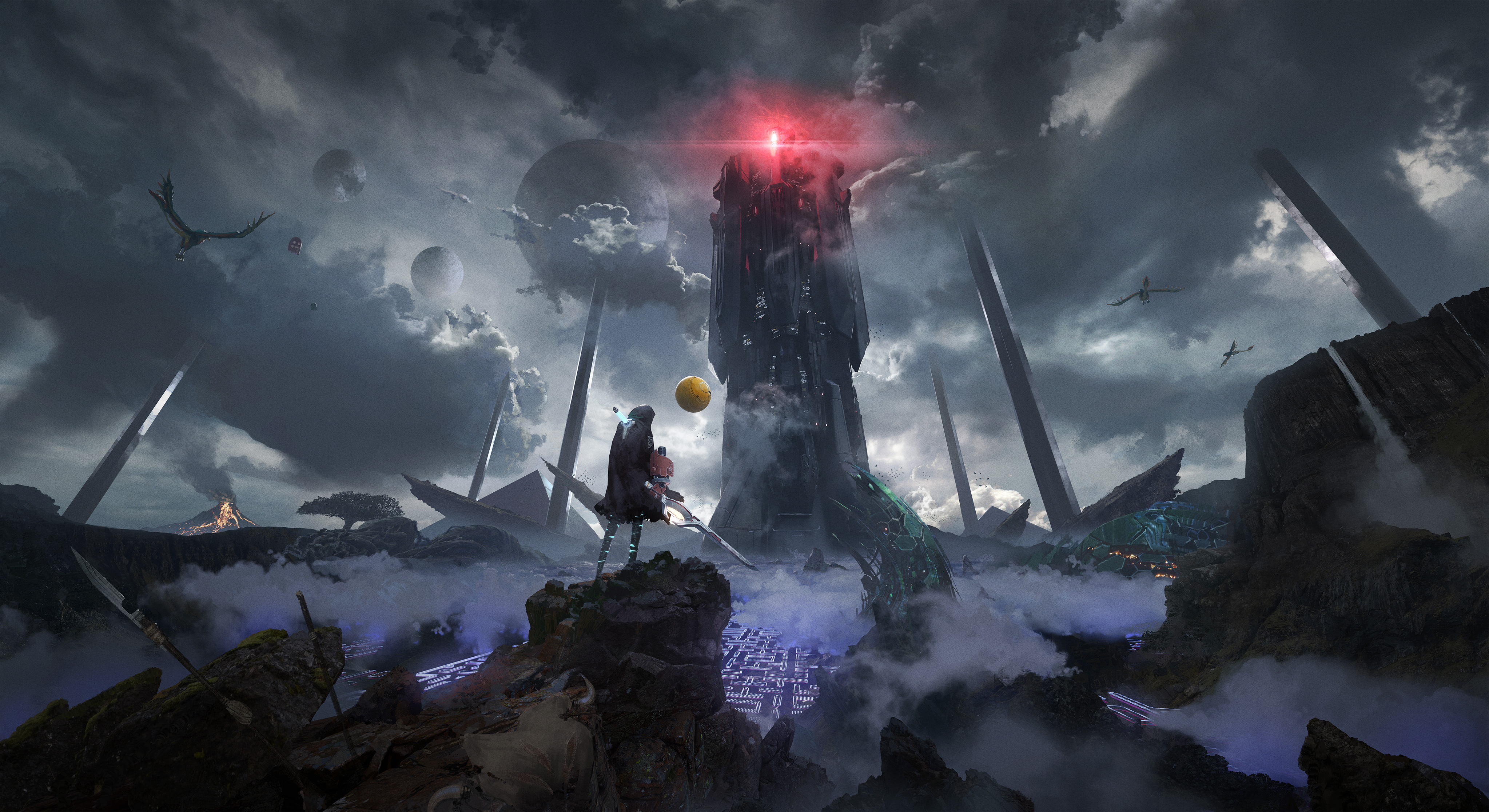Remnant: From the Ashes is a secret-filled shooter with an unlikely inspiration: Terraria
Gunfire Games wants Remnant to keep you hooked run after run, as each one reveals new discoveries.
The last game name I expect Gunfire Games president David Adams to drop is Terraria. We're talking about Remnant: From the Ashes, his studio's attempt to make a big, deeply replayable third person shooter. Every quest, area, and boss fight is hand-designed, but the world you explore will be stitched together with procedural generation, so every run will be different. "Honestly, the game that inspired us the most was Terraria," Adams says. That's a surprise, coming from the team that made the Darksiders series—but it makes sense pretty quick.
"Obviously, [Remnant] is a completely different game than that," Adams says. "But there was a really good sense of exploration and adventure in that game. So we [thought] hey, if there was a full 3D game with RPG elements and all this stuff, but had that same level of exploration and secrets, that'd be super cool. That's where it started a million years ago."
The same way they would in an adventure game like Darksiders, Remnant's designers are trying to pack the game full of secrets, some begging to be discovered, others more deeply hidden.
Adams tells me he has a hard time playing any game on New Game+, because once he knows what to expect, he loses interest. But their team loves to make exploration-driven adventure games, like Darksiders. Procedural generation—and packing the world with secrets—was the answer for doing both.
That Makes Remnant: From the Ashes sort of a weird hybrid of loot-driven games like Destiny and Diablo, designed to be endlessly repeated, and more traditional, linear games. When the game generates a world for you, the layouts of the environments will be different, and there's no telling what quests will be available or what other quests they'll connect to. And because there's a layer of meta progression in Remnant, where you go back to your main hub before "rolling" a new world to explore, progress between related quests can end up carrying over between runs.
It sounds like a clever mix of a more traditional singleplayer adventure and a game like Diablo, where story events are the same but the layout of a level changes every time.

Adams gives me an example: You run into an old man out in the world, who seems like a normal merchant at first, but depending on how you interact with him you can get his pocket watch. If you have that watch when you meet his son, who is actually a mini boss, things will go very differently than they would otherwise.
"That quest is a great example, because it actually has three potential outcomes depending on if you're playing in multiplayer, if you're playing in solo, if you found his father and you have the pocket watch," he says. "A lot of these quests have multiple ways to play out, depending on what else generated in the world or what else you've done in the world... We have different ways of tying the quest into the random generation system so that it knows, for instance, if one quest is a dependency of another quest, or if it's a loose dependency, meaning they're linked but they don't have to necessarily be on the same world."
Keep up to date with the most important stories and the best deals, as picked by the PC Gamer team.
The same way they would in an adventure game like Darksiders, Remnant's designers are trying to pack the game full of secrets, some begging to be discovered, others more deeply hidden. For example, every boss will drop an alternate award if you defeat it a certain way, but it's not as simple as, say, Monster Hunter, where if you slice off a tail during the battle you get an extra monster part.
"We didn't want to be like, oh, you shoot the tail off of this creature and it gives you a boss weapon, and that's how it is on every boss," Adams says. "We do that shtick once, and then every boss breaks it up."
Some secrets will take you through multiple runs, quests and puzzles with multiple outcomes that play into the procedural generation. Even though the game is, as Adams points out, moment-to-moment mostly a co-op shooter, piecing together those solutions and alternate paths will hopefully go a long way towards luring in players like me who prefer discovery over grinding levels again and again. In the couple hours of Remnant: From the Ashes I played at a preview event, the environments felt a little empty, a little generically post-apocalyptic, but talking to Adams has me interested in looking at them more closely.
Again, it comes back to Terraria.
"I remember one of the defining moments was, 'you think there's islands up in the clouds?' 'I don't know, let's build a giant ladder,'" says Adams. "And there were actually islands up in the clouds, which was an amazing moment."
At Gunfire Games there's an office bet on how long some of the secrets and quest outcomes will last before they're dissected and posted to a wiki. There's one that Adams thinks might never be found unless they give it away. But another he decided to give us a leg up on.
"Write this down, because I don't want people to miss it," he says. "I won't tell you what it is, but there's a secret right at the beginning of the game that 95% of people walk right past. But it unlocks a completely hidden area in the game with cool stuff, and there's an awesome gun down there. But in the play test, I think one out of 20 people actually do it."
And that area, naturally, "has its own secrets within it." I can almost picture the twinkle in his eye as he says it.
Remnant: From the Ashes is out on PC in just a month, on August 20. If you, like me, played and loved Gunfire's Oculus Rift launch game Chronos, you may be excited to hear Remnant is set in the same world, and there are definitely some connections between the two.

Wes has been covering games and hardware for more than 10 years, first at tech sites like The Wirecutter and Tested before joining the PC Gamer team in 2014. Wes plays a little bit of everything, but he'll always jump at the chance to cover emulation and Japanese games.
When he's not obsessively optimizing and re-optimizing a tangle of conveyor belts in Satisfactory (it's really becoming a problem), he's probably playing a 20-year-old Final Fantasy or some opaque ASCII roguelike. With a focus on writing and editing features, he seeks out personal stories and in-depth histories from the corners of PC gaming and its niche communities. 50% pizza by volume (deep dish, to be specific).

